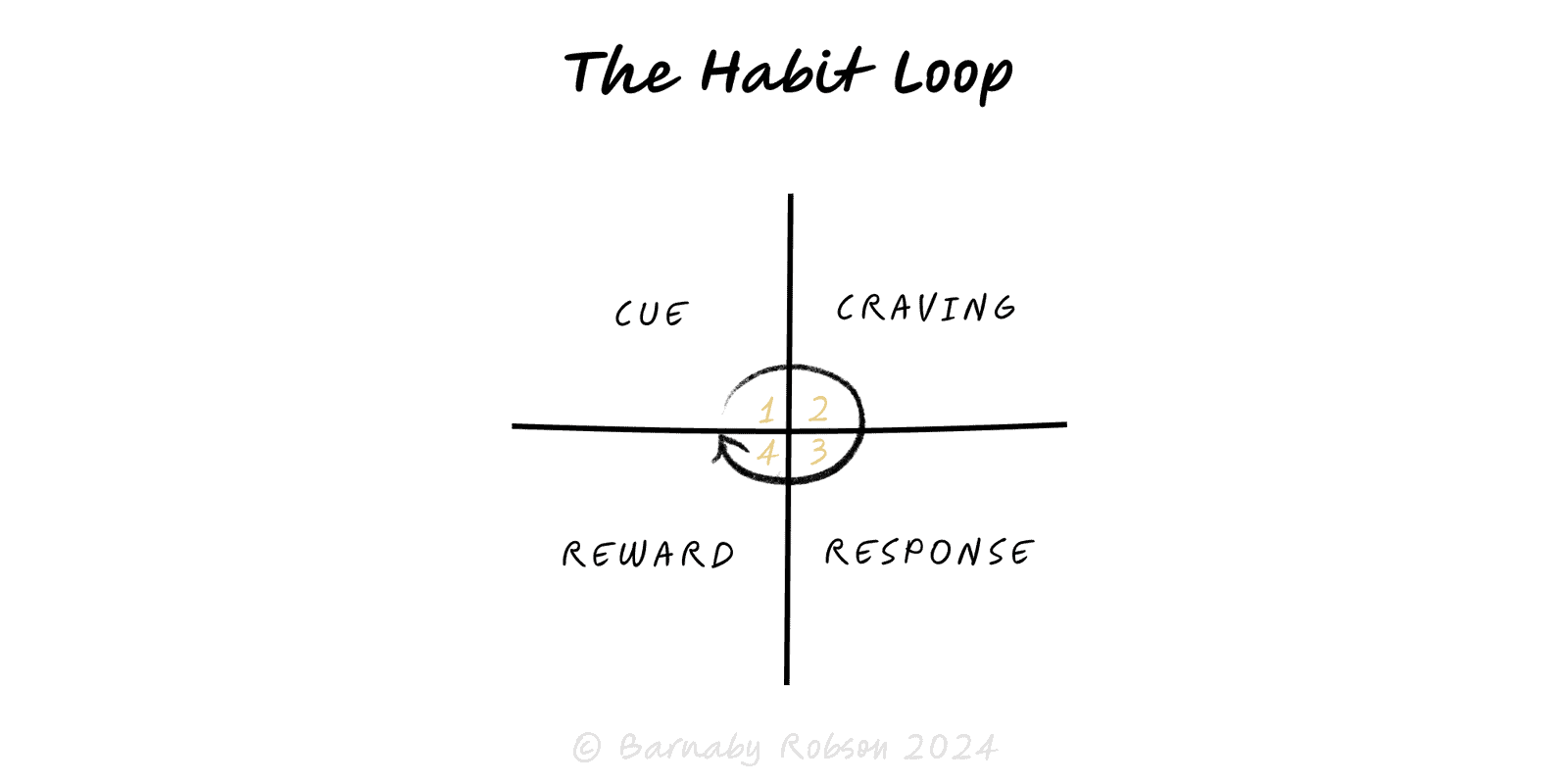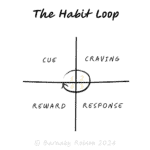The Habit Loop
Charles Duhigg (popularised “cue → routine → reward”); expanded by BJ Fogg and James Clear (“craving/identity”)

The habit loop explains how automatic behaviours form and persist. A cue triggers a routine (the behaviour) to gain a reward (state change or outcome). Modern variants add craving (the anticipation that drives action) and emphasise identity (“I’m the kind of person who…”). You engineer habits by shaping cues, simplifying the routine, and ensuring a fast, felt reward—while removing or neutralising cues for unwanted loops.
See my separate write-up on the book Atomic Habits here: https://barnabyrobson.org/atomic-habits-1-better-every-day/
Cue – time, place, preceding action, emotional state, or social/visual signal.
Craving – the expected state change (relief, stimulation, progress).
Routine (response) – the behaviour you perform (automatic if friction is low).
Reward – closes the loop; releases “this worked” signal and strengthens the link.
Repetition → automaticity – consistent pairing of cue and reward cements the routine (context-dependent).
Identity layer – habits stick when they confirm a chosen identity (“I don’t miss workouts”).
Keystone habits – some routines (sleep, exercise, journalling) cascade positive side-effects.
Personal performance (exercise, deep work, nutrition, sleep).
Team rituals (daily stand-up, incident postmortems, code review).
Product & UX (onboarding cues, streaks, progress bars, reminders).
Safety & reliability (checklists, pre-flight routines, handoff protocols).
Diagnose an existing loop
Log the cue (when/where/preceding action), the routine, and the real reward (how you feel right after).
Redesign the loop
Keep the cue and reward, swap the routine for a healthier one that gives the same state change.
Example: afternoon slump → walk + water (not sugar); reward = refreshed feeling + tick on habit tracker.
Engineer good habits
Make it obvious – stable cue (same time/place), visual triggers, habit stacking: “After [current habit], I will [new habit].”
Make it easy – two-minute starter; prepare environment; remove steps.
Make it satisfying – immediate, honest reward (progress counter, social check-in, tiny treat).
Make it identity-consistent – write the identity and cast daily “votes” for it.
Break bad habits
Make it invisible – remove cues (apps off home screen, no snacks in sight).
Make it hard – add friction (website blocks, pre-commit contracts, no-card-on-file).
Make it unsatisfying – tie to a cost or accountability; find a substitute routine for the same reward.
Lock it in
Track streaks, review weekly, raise the bar slowly; protect keystone habits (sleep, movement).
Vague cues – “sometime tomorrow” never triggers; anchor to a specific time/place/preceding action.
No immediate reward – distant goals don’t teach the brain; add a near-term win signal.
Too much friction – ambitious starts fail; begin with the two-minute version.
Identity mismatch – “should” habits without identity support fade; define the identity first.
Environment denial – willpower loses to ever-present cues; design the environment.
Variable rewards – powerful for engagement but can tip into compulsion; use ethically.
